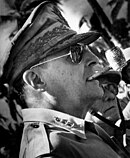The Virginia Portal  Virginia, officially the Commonwealth of Virginia, is a state in the Southeastern and Mid-Atlantic regions of the United States between the Atlantic Coast and the Appalachian Mountains. The state's capital is Richmond and its most populous city is Virginia Beach, though its most populous subdivision is Fairfax County, part of Northern Virginia, where slightly over a third of Virginia's population of 8.72 million live. The Blue Ridge Mountains cross the western and southwestern parts of the state. The state's central region lies predominantly in the Piedmont. Eastern Virginia is part of the Atlantic Plain, and the Middle Peninsula forms the mouth of the Chesapeake Bay. The fertile Shenandoah Valley fosters the state's most productive agricultural counties, while the economy in Northern Virginia is driven by technology companies and U.S. federal government agencies, including the U.S. Department of Defense and Central Intelligence Agency. Hampton Roads is also the site of the region's main seaport and Naval Station Norfolk, the world's largest naval base. (Full article...) Selected article
The Stanley plan was a package of 13 statutes adopted in September 1956 by the U.S. state of Virginia designed to ensure racial segregation in that state's public schools despite the ruling of the Supreme Court of the United States in Brown v. Board of Education of Topeka, Kansas, 347 U.S. 483 (1954). The legislative program was named for Governor Thomas B. Stanley, who proposed the program and successfully pushed for its enactment. The Stanley plan was a critical element in the policy of "massive resistance" to the Brown ruling advocated by U.S. Senator Harry F. Byrd, Sr. (pictured). The plan also included measures designed to curb the Virginia state chapter of the National Association for the Advancement of Colored People (NAACP), which many Virginia segregationists believed was responsible for "stirring up" litigation to integrate the public schools.
The plan was enacted by the Virginia Assembly on September 22, 1956, and signed into law by Governor Stanley on September 29. A federal court struck down a portion of the Stanley plan as unconstitutional in January 1957. By 1960, nearly all of the major elements of the plan (including the litigation curbs aimed at the NAACP) had been struck down by the U.S. Supreme Court and other federal and state courts. The constitutional invalidity of the Stanley plan led new governor of Virginia, James Lindsay Almond, Jr., to propose "passive resistance" to school integration in 1959. The Supreme Court declared portions of "passive resistance" unconstitutional in 1964 and again in 1968. Selected biography
General of the Army Douglas MacArthur (1880 – 1964) was an American general and field marshal of the Philippine Army who was Chief of Staff of the United States Army during the 1930s and played a prominent role in the Pacific theater during World War II. He received the Medal of Honor for his service in the Philippines Campaign. He was one of only five men ever to rise to the rank of General of the Army in the U.S. Army, and the only man ever to become a field marshal in the Philippine Army.
Raised in a military family, he graduated top of the class at United States Military Academy at West Point. MacArthur was decorated for his service in Western Front during World War I, served as Superintendent of the U.S. Military Academy at West Point, was Chief of Staff of the United States Army, and retired from the army in 1937. MacArthur was recalled to active duty in 1941 as commander of United States Army Forces in the Far East, countering the invasion of the Philippines by the Japanese. MacArthur's forces were soon compelled to withdraw to Bataan, where they held out until May 1942, escaping to Australia where MacArthur became Supreme Commander, Southwest Pacific Area. After more than two years of fighting in the Pacific, he fulfilled a promise to return to the Philippines. He officially accepted Japan's surrender on 2 September 1945, and oversaw the occupation of Japan from 1945 to 1951. As the effective ruler of Japan, he oversaw sweeping economic, political and social changes. He led the United Nations Command in the Korean War until he was removed from command by President Harry S. Truman on 11 April 1951. He and his wife are buried in Norfolk, Virginia. This month in Virginia history
Random Virginia articleA random generator will select an article about… 
(note: generator may be slow) Things you can do
Tasks
Selected image Turning vanes inside one of the wind tunnels at the Langley Research Center in Hampton, Virginia Did you know -
Fact sheet
State symbols:
Government
Related portalsVirginia topicsSubcategoriesSelect [+] to view subcategories
Associated WikimediaThe following Wikimedia Foundation sister projects provide more on this subject:
Discover Wikipedia using portals |


























